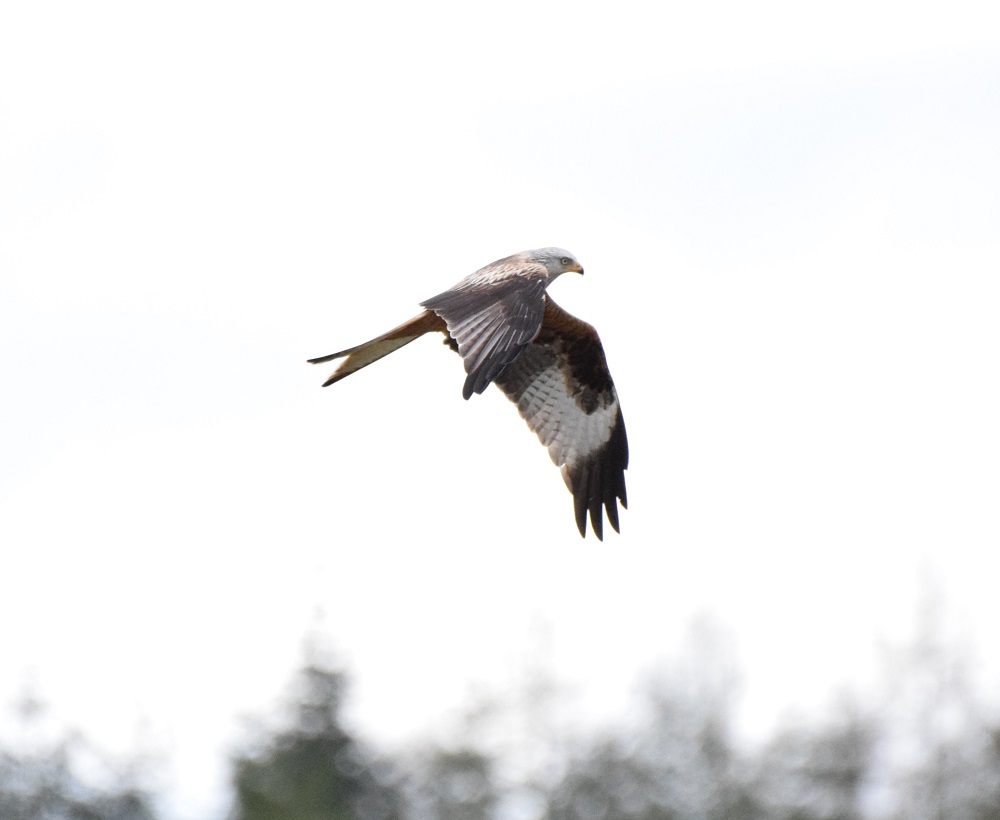Wildlife Worth Watching For

Not All Stars Have Fins!
We’ve done the introduction to our crew and the dolphins, but what you might also need to know more about is the other wildlife often seen in our little corner of the Moray Firth; not all of it has fins! In this list we will cover some of the biggest and best, where to see them, and what to look out for on the water!
Red Kites
Over your head you might come across a rather imposing shadow; one with a 5-6ft wingspan and a long, v-shaped tail. This is the tell-tale sign of a red kite, like the one pictured above. The red kites here were born of a long-running reintroduction program starting back in the 1980s. The population was expected to merge with another reintroduced group well to the south, in Devon. The Devon population have since done their bit, with red kites now being spotted in the Midlands commonly as a result. The Highlands population seems to have suffered a few setbacks in their regrouping, with only around 250 or so breeding pairs in this area. It is thought that the illegal persecution (killing, particularly poisoning) of these birds on farmland and shooting grounds has proven the biggest threat and blocker to the successful bloom of red kites in Scotland. Despite this, Scottish kites have been sighted in England, Ireland, and some even as far as Iberia! We are lucky to see them year-round in the Highlands, primarily over the trees on the Black Isle, or passing over water between Munlochy and Culloden, or North and South Kessock.
Seals
The Moray Firth homes two kinds of seals, one slightly more commonly spotted on our trips than the other (which may explain the name!). The first, and smallest, species is the harbour (or common) seal; these are indeed the ones we see most. Compact, generally less than 2m in length, with a rather cat-like face, these seals are very active in summer. The main portion of their birthing season occurs in June and July, meaning that these midsummer months are the best times to look out for pups. Harbour seal pups are actually pretty great swimmers, and are sometimes in the water mere hours after birth. That being said, small bodies don’t work well over long swims, and sometimes mothers will be spotted giving piggybacks to the youngsters while on hunts. We have a small population (roughly 12 or so) of these seals living on the mudflats just outside of Inverness Marina. Our other seals are the grey seals; with just around 500 of these seals visiting the Moray Firth, they number roughly a quarter of the overall seal population of the firth itself. Their Latin Name, which translates to “hook nosed sea pig” comes from their distinctively long snout. It is therefore very easy to differentiate between a harbour and grey seal when in profile. The grey seals are most abundant before their pupping season, which is around autumn-time, as they will leave then to return to their designated birthing haul-outs, which tend to be more to the north.
Osprey
Another feathered visitor to the Moray Firth is the Osprey; these white and brown birds summer in Scotland to hunt down the migrating salmon. About the same size as a kite, they have long, finger-like wings and can most often be seen near or over water. Their talons and feet are specially designed to give them grip on slippery fish, and they can even close their nostrils to prevent them breathing in water as they dive into the water after their prey! They are generally most active over three points in their season; just before mating (so immediately on their return to the nesting grounds), after the young have hatched, and after fledging. The osprey will leave Scotland in dribs and drabs over the early autumn months, with most gone by October, so the best time to see them will shortly be coming to a close! These impressive birds will return to their winter grounds in Africa and Spain, with some flying as much as 430km a day!
Otter
The otters are perhaps some of the shyest of the wildlife to spot on the firth; small, sleek, and very quick, the otters can be there in a second and gone the next. Essentially looking like water weasels, the otters in our part of the firth tend to be of the one mating group – a mother, her cubs, and a large male. There is no distinct pattern to the activity we see from the otters, but we tend to find them within the first 20 minutes of the trip most commonly; at the harbour wall, under the bridge, or on the piers at either North or South Kessock. There is also no defined breeding season for otters in Scotland, so determining behaviour based on season is very difficult. That being said, the otter pair here certainly aren’t shy about their antics, and have been spotted copulating a few times over the past few months, so the possibility of new cubs is certainly a very real one. Feeding on a variety of fish and at times, birds, too, it’s quite comical what you can see them with at times; last season’s otter highlight was the unfortunate demise of a non-breeding guillemot in the jaws of the big male just outside the ICT Stadium!
Harbour Porpoise
A worthy mention has to go to our unicorns of the firth, the harbour porpoise. Sightings of these elusive little cetaceans are few and far between, with only an estimated 80 individuals living in the Moray Firth! Bullied by the bottlenoses, the porpoise will actively avoid all the areas the dolphins tend to inhabit; sticking to the shore in small groups, avoiding boats, surfacing only when required and evading detection through sound or sight. We have historically had a few good sightings of tiny little triangular fins in the firth, but it must be said, you have to have some kind of luck to come across them! Mischief’s first cetacean spotted was a porpoise, all things being said, so you just never know when or where they could crop up!
